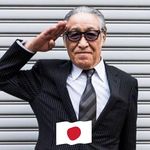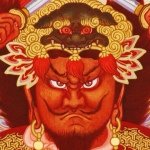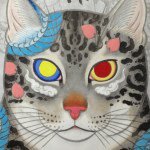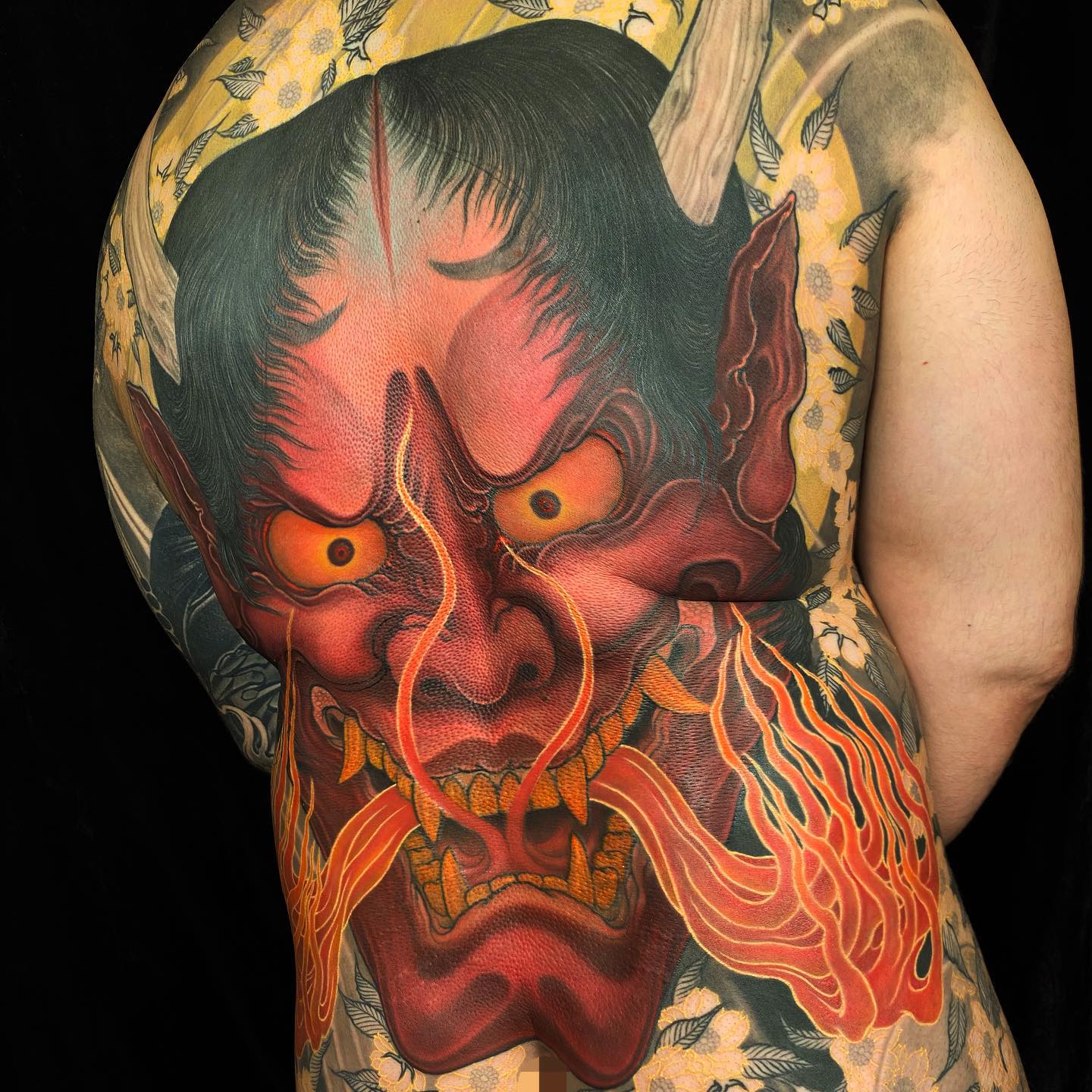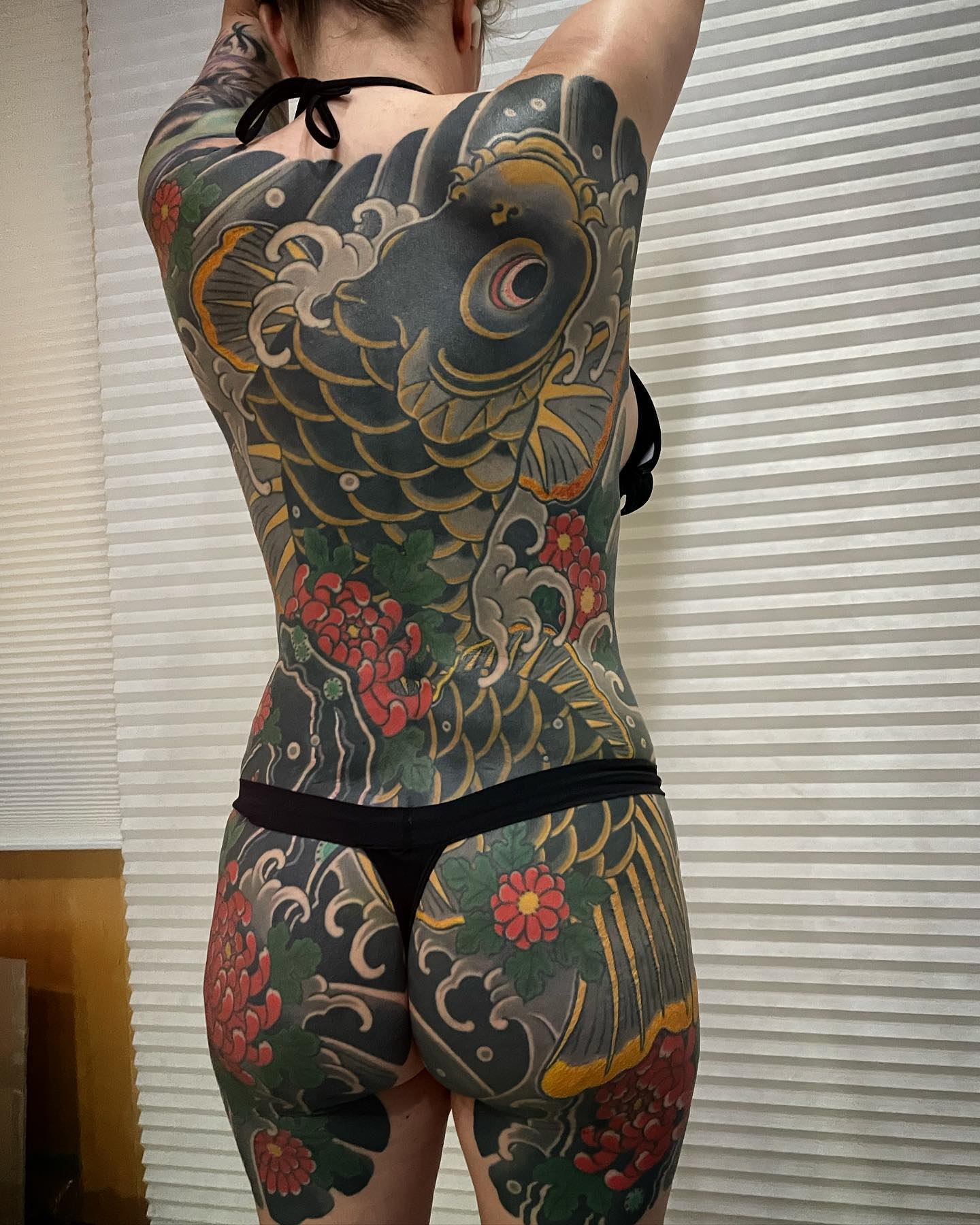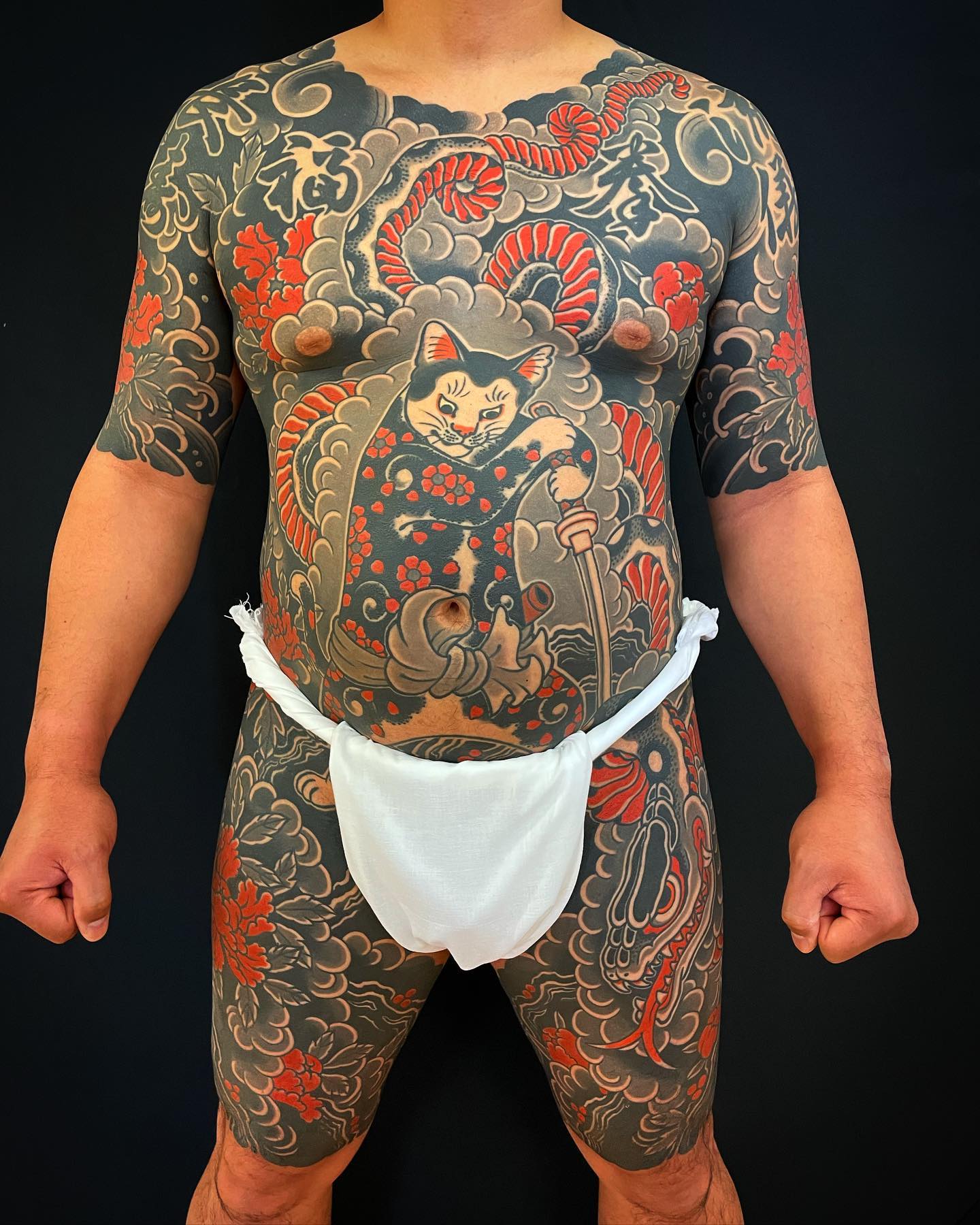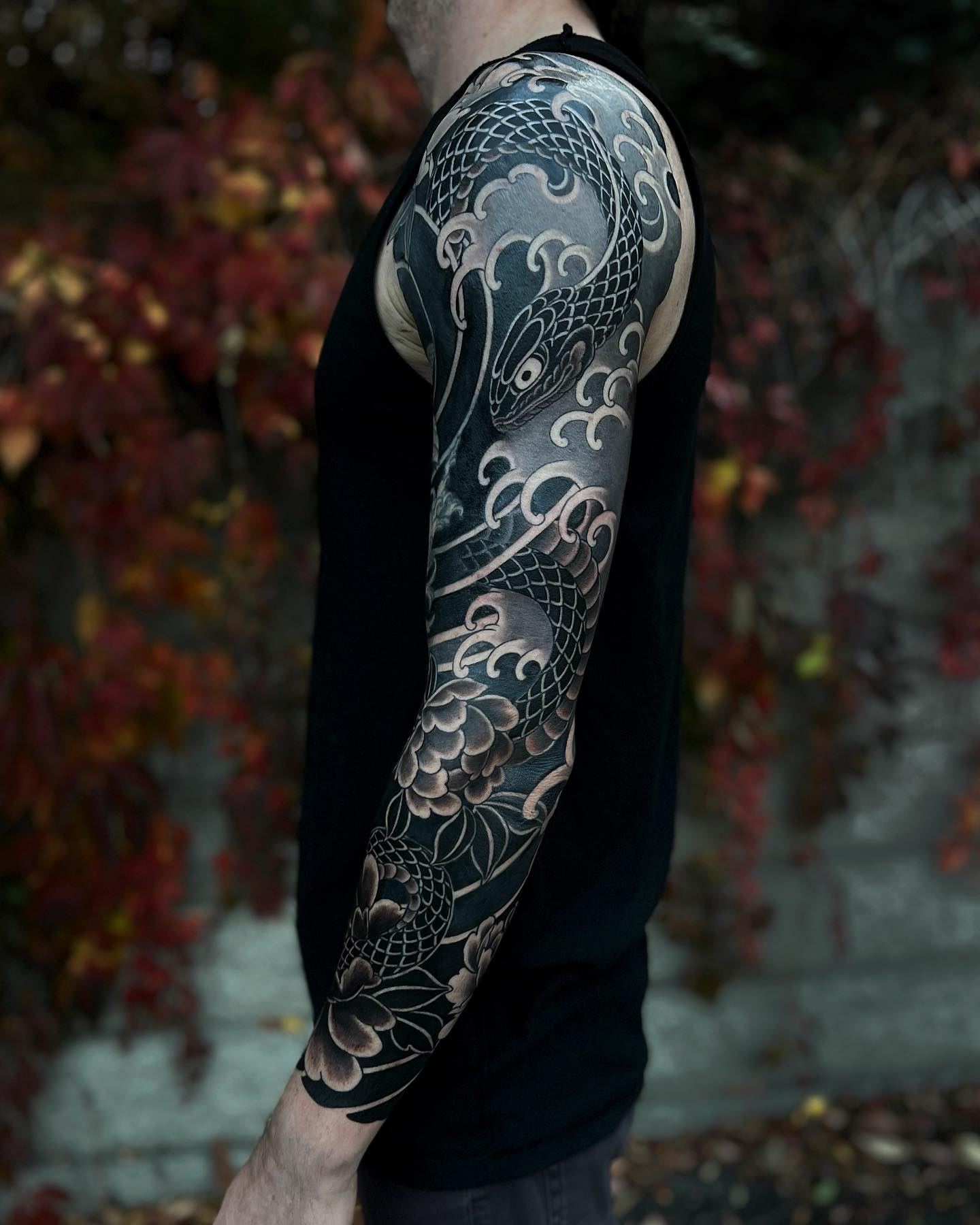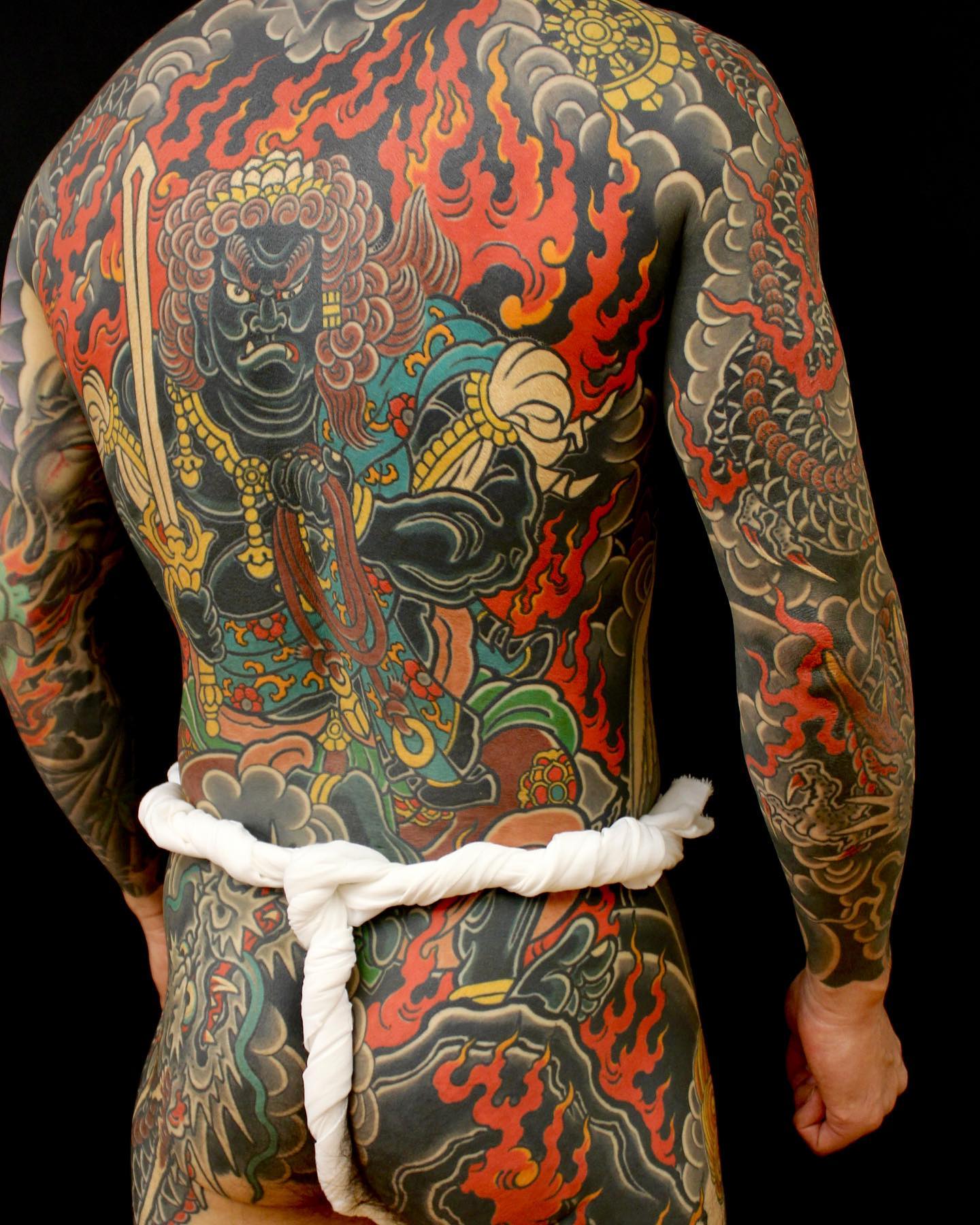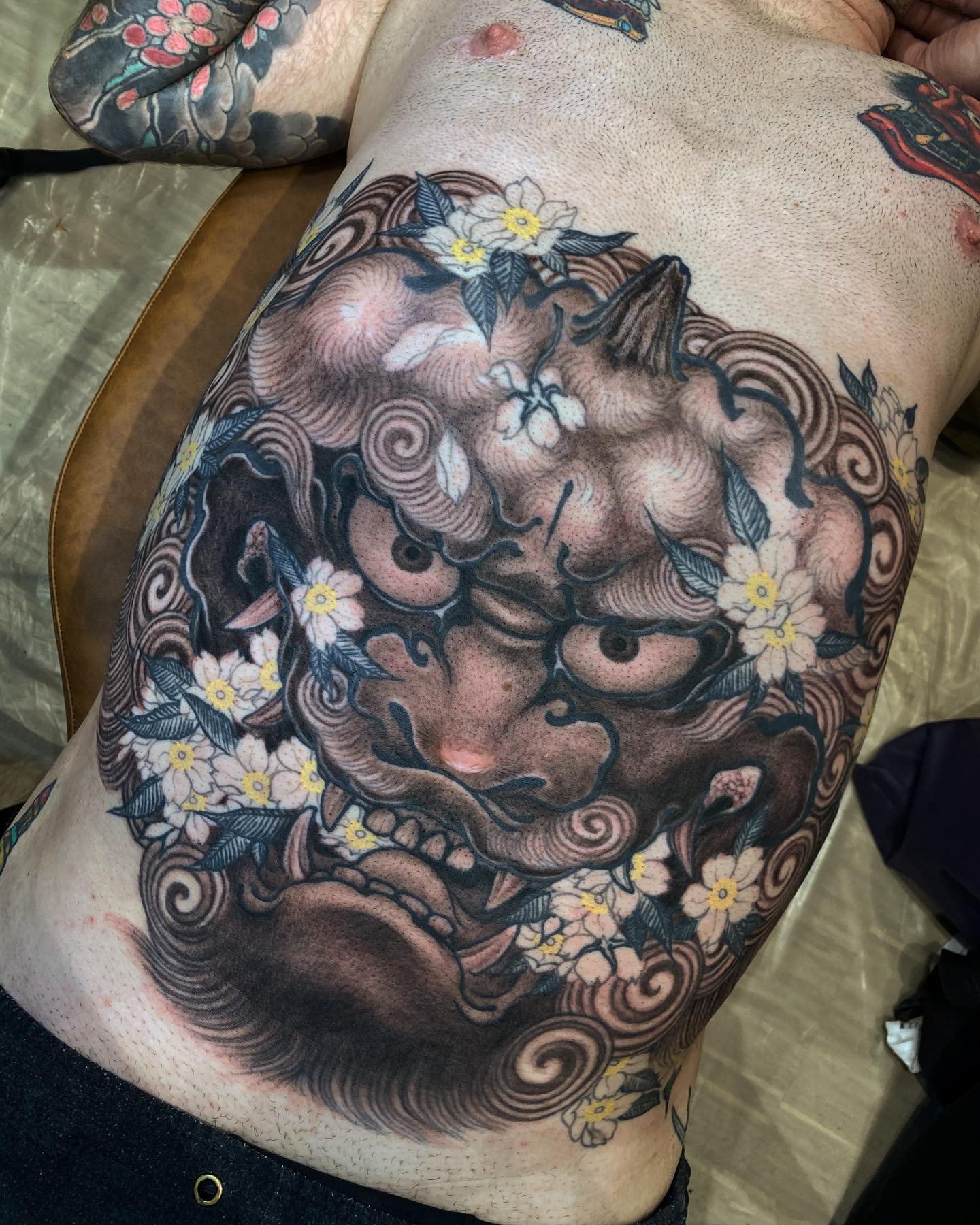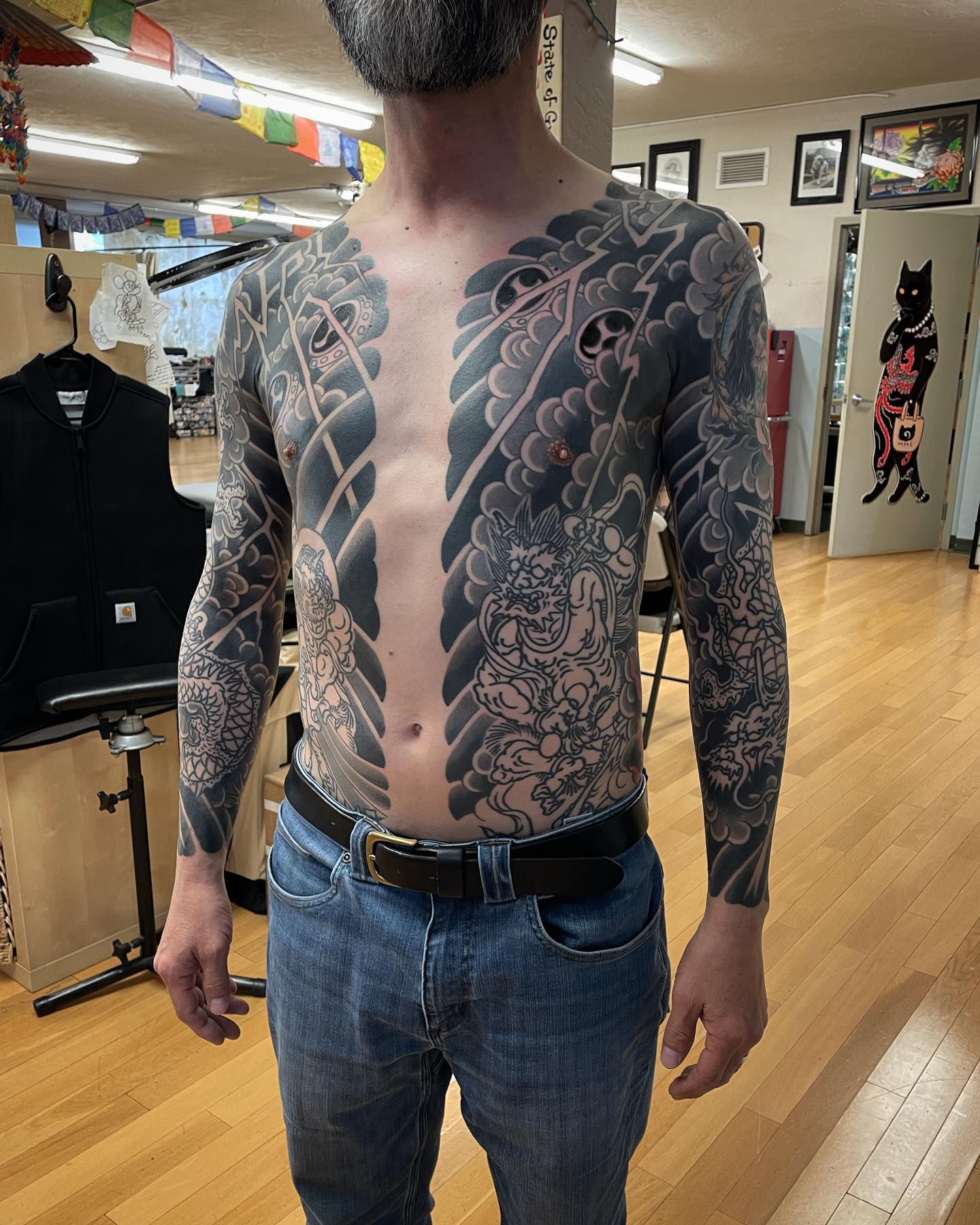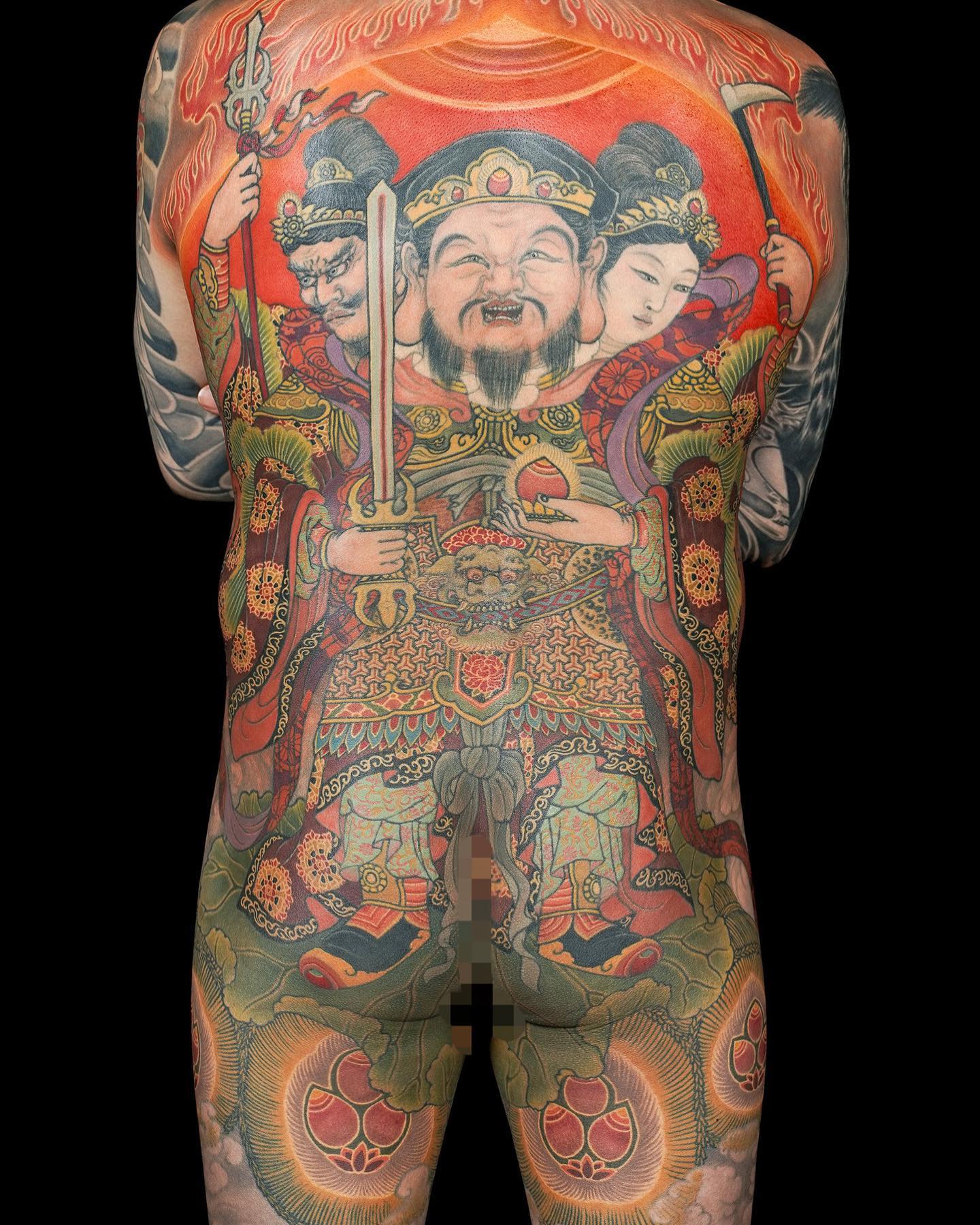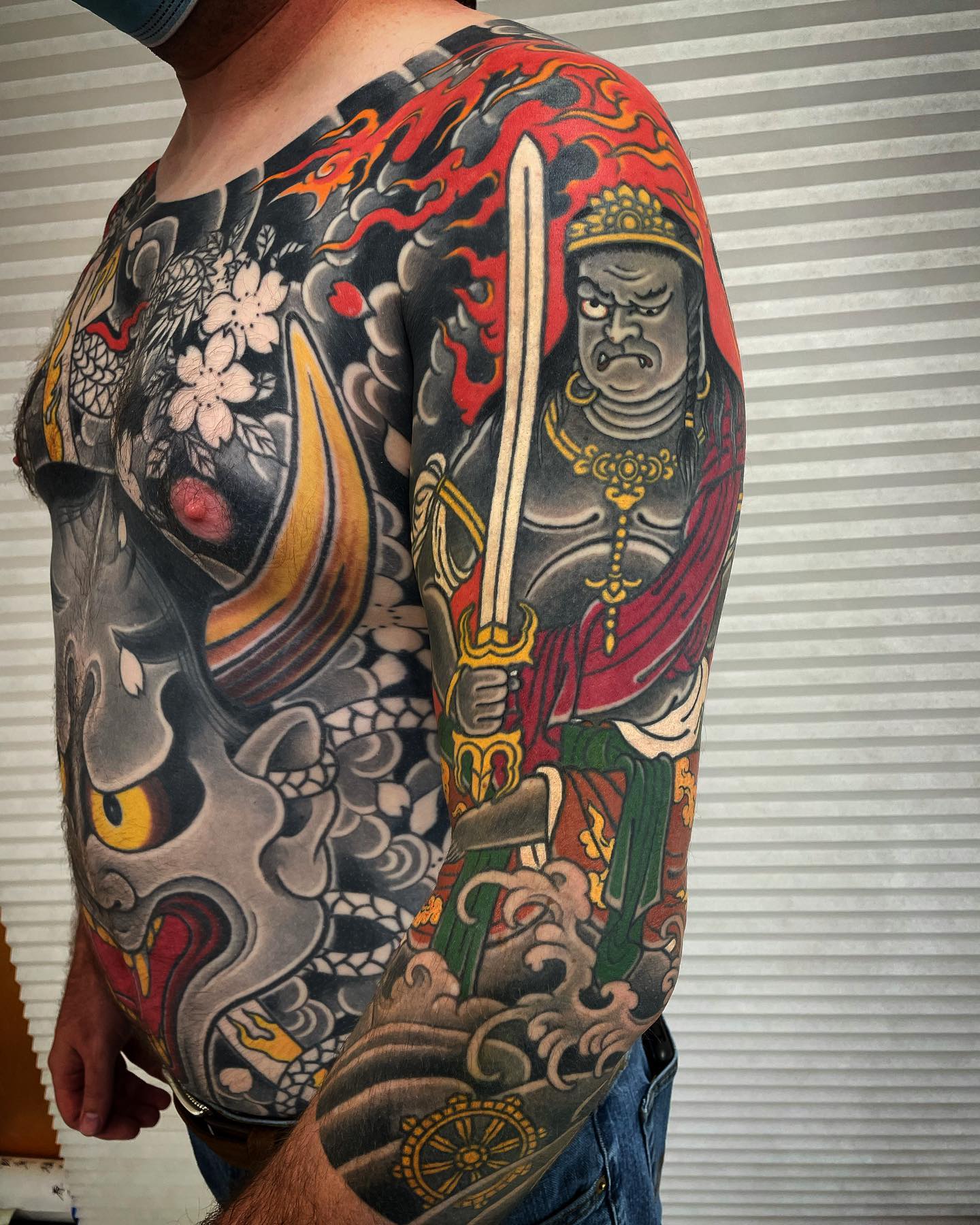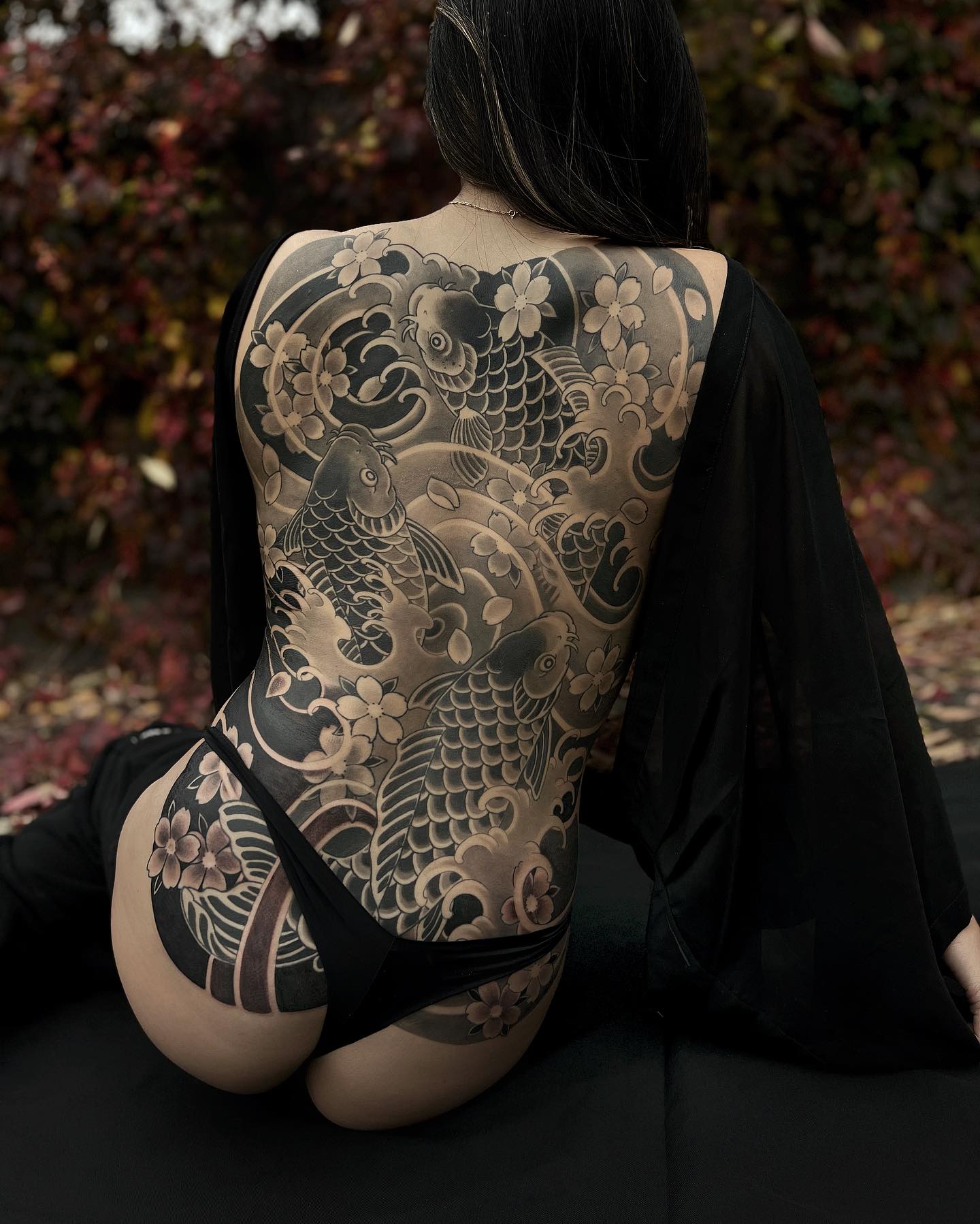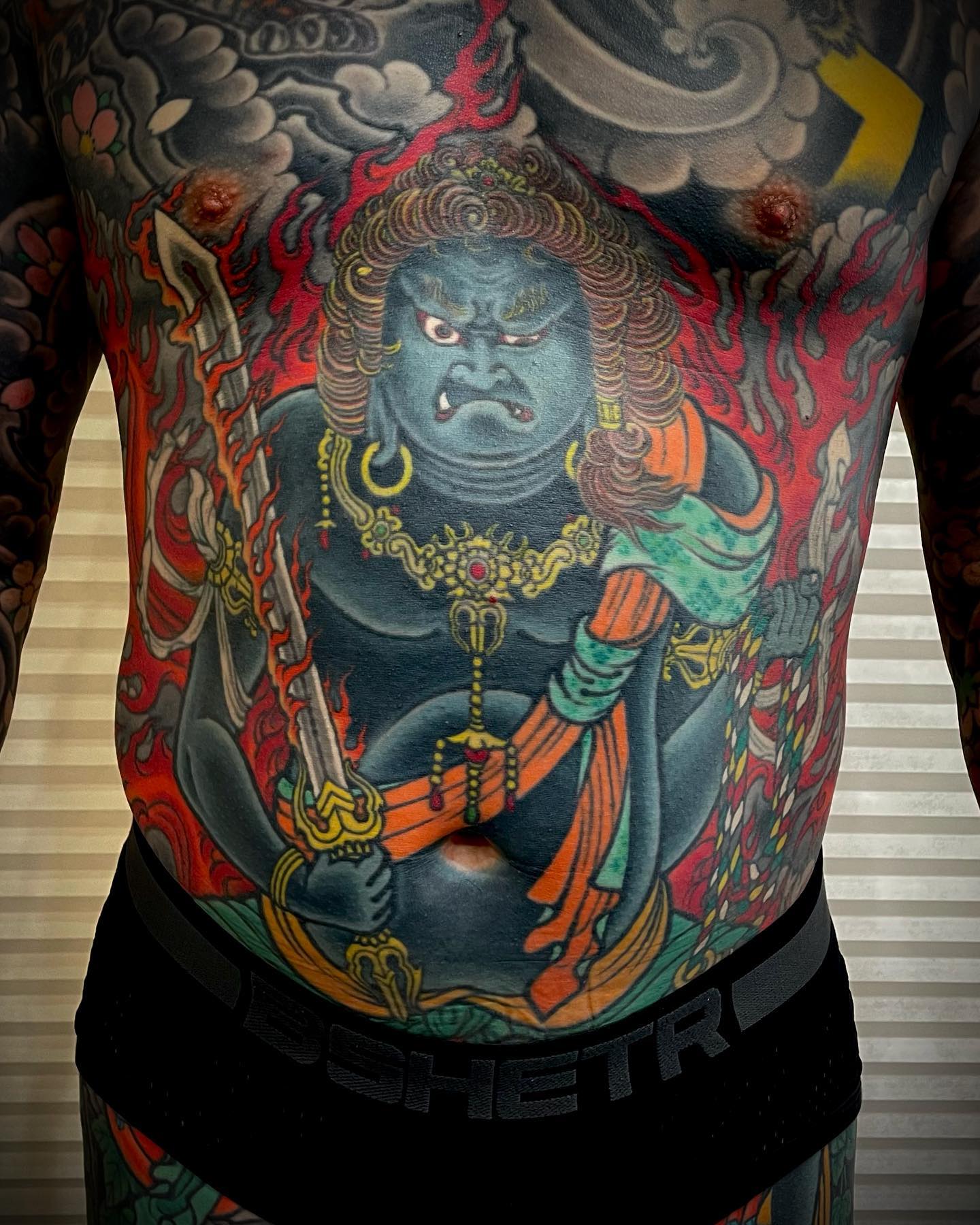The Art of Irezumi: A Guide to Traditional Japanese Tattoos
Japanese tattoos, known as “Irezumi” in Japan, are more than mere decorations on the skin; they are a reflection of a complex cultural narrative interwoven with history, belief, identity, and artistry. This research article sets out to unravel these complexities, offering readers a panoramic view of a subject that has captivated imaginations and provoked debates across centuries.
Whether a tattoo enthusiast, a student of Japanese culture, or an art lover, this study endeavors to provide insights and perspectives that contribute to a richer understanding of Japanese tattoos. By delving into the history, styles, symbolism, techniques, cultural significance, legal considerations, health factors, and contemporary trends, we seek to present an all-encompassing view of this fascinating subject.
Our exploration extends beyond mere aesthetics, revealing the sociocultural forces that have shaped and continue to influence Japanese tattoo artistry.
Traditional Japanese Tattoo Style Features
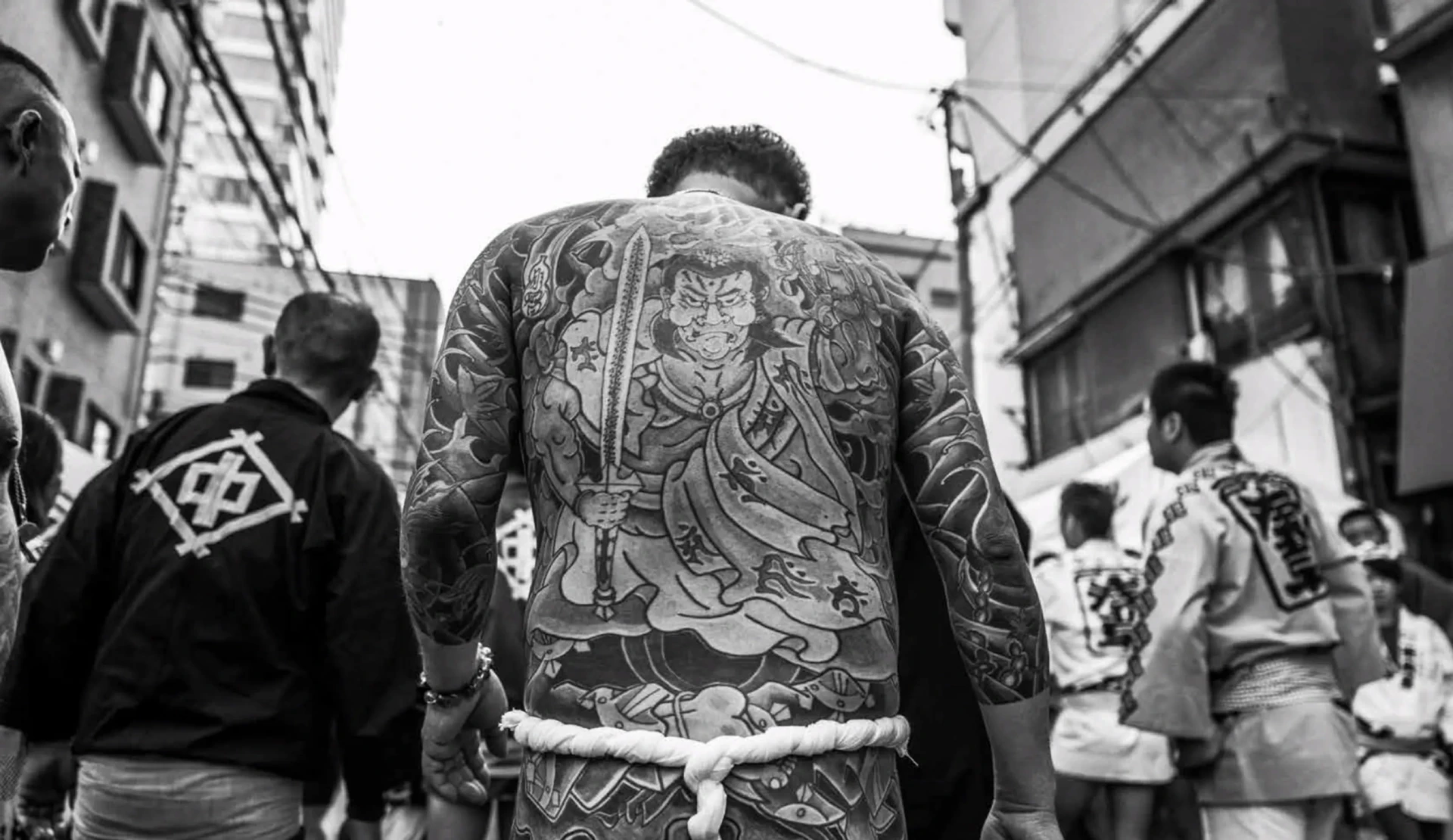
-
Aesthetics and Composition
The aesthetics of traditional Japanese tattoos are distinctive, characterized by bold lines, deep colors, and complex, flowing designs. Unlike some other tattooing styles, traditional tattoos often cover large areas of the body, such as the back, arms, or legs, creating a coherent and continuous image.
-
Full-Body Artwork: Traditional Japanese tattoos often come in the form of full-body suits or large-scale pieces like half-sleeves or full-back tattoos. These extensive works can sometimes take years to complete.
-
Use of Colors: While black ink plays a significant role in outlining and shading, traditional Japanese tattoos are known for their vibrant use of colors. Reds, blues, greens, and yellows are utilized to create lively images.
-
-
Symbolism and Imagery
Japanese tattoos are replete with symbols and images that carry specific meanings and connotations. This symbolism is deeply rooted in Japan’s cultural heritage, drawing from mythology, folklore, Buddhist and Shinto beliefs.
-
Mythical Creatures: Dragons, phoenixes, and Kirin (a mythical hoofed chimerical creature) are popular motifs. These creatures often symbolize strength, protection, and good fortune.
-
Flora and Fauna: Various animals and plants, such as koi fish (perseverance), cherry blossoms (transience of life), and tigers (courage), are common themes, each symbolizing different virtues or philosophical ideas.
-
Human Figures: Traditional Japanese tattoos often feature characters from history, folklore, or theatre. Samurai, geishas, and Kabuki actors may be depicted to convey specific values or narratives.
-
-
Techniques and Tools
-
Tebori (Hand-Poked): Tebori is a traditional method of tattooing by hand that’s been used before. Using a tool with a bundle of needles attached to a wooden or metal handle, the artist manually inserts ink into the skin. This painstaking process allows for great precision and results in unique textural effects.
-
Shading and Gradation: The use of shading and gradation is a hallmark of Japanese tattoos. Artists employ different techniques to create a sense of depth, movement, and life-like realism in the designs.
-
-
Cultural Context
-
The features of traditional Japanese tattoos are not just aesthetic choices but reflect a deeper cultural understanding. Many of the designs and symbols are chosen for their ability to convey specific virtues, beliefs, or societal values. For those being tattooed, the choice of design can be a deeply personal reflection of identity, values, or spiritual beliefs.
-
Shading and Gradation: The use of shading and gradation is a hallmark of Japanese tattoos. Artists employ different techniques to create a sense of depth, movement, and life-like realism in the designs.
-
History of Japanese tattoos
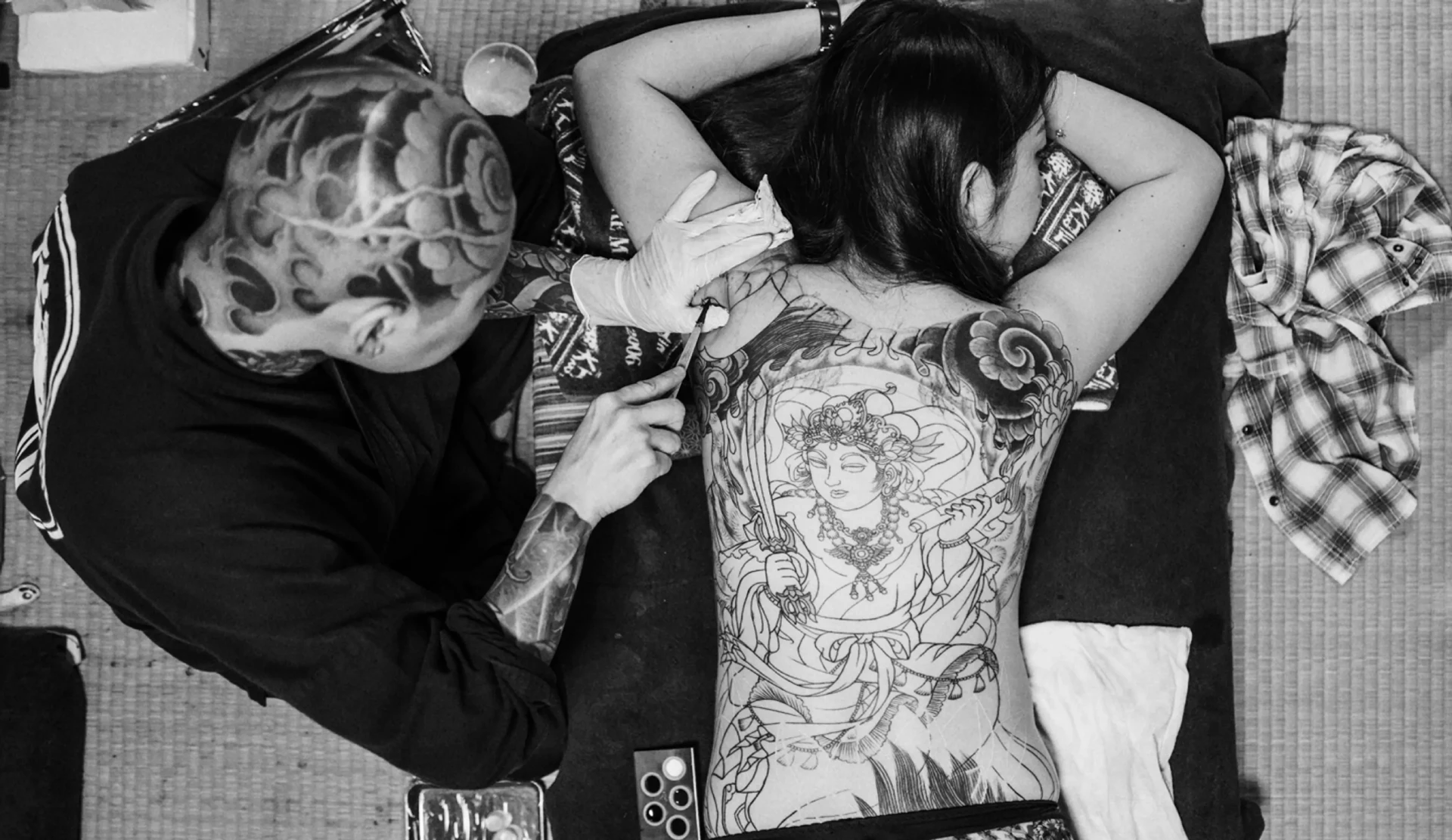
Ancient Japanese Practices
The history of Japanese tattoos is rich and directly related to the stages of history in Japan. Its’ roots stretch back to the Jomon period (around 10,000 BC). Archaeological evidence, including clay figurines and artifacts, indicates that tattooing might have been practiced for spiritual or status-related purposes.
For example, clay figures (dogu) depicted various spheres of life of people of ancient Japan and many scientists believe that the coloring of faces and bodies of these figures is a kind of the first body art. The Ainu people, indigenous to parts of Japan, used tattoos for ornamental and social reasons, especially among women.
During the Yayoi period (300 BC – 300 AD), tattoos in Japan were symbols of social status and also carried spiritual significance. However, this perception of the art form underwent a drastic transformation in the subsequent period from 300 A.D. to 600 A.D. During this time, tattoos began to be used as punitive markings, particularly among criminals, shifting the art’s connotation from a mark of honor to one of disgrace.
Evolution Through Dynasties
The Asuka period (538 – 710 AD) saw the influence of Chinese culture, which brought about a negative perception of tattoos. Laws were enacted to discourage the art form, associating it with criminality and barbarism. However, despite official disapproval, tattooing continued to thrive among certain social groups.
During the Edo period (1603 – 1868), tattoo artistry experienced a resurgence. The period’s thriving urban culture and the popularity of “ukiyo-e” woodblock prints fueled the growth of intricate and colorful tattoo designs. The subjects of these designs were often drawn from folklore, history, and theatre, particularly the Kabuki actors.
Tattooing during the Edo period also became associated with the “firemen,” brave individuals responsible for fighting fires in the city, and the “Yakuza” a notorious criminal organization. The association between tattoos and the Yakuza has contributed to a stigma against tattoos in Japanese people.
This connection has led to a perception of tattoos as something associated with criminality or anti-social behavior, resulting in discrimination against tattooed individuals in various social settings. However, the connection between Yakuza tattoos and the criminal underworld continues to be a complex and evolving aspect of Japanese culture.
Cultural Shifts and Influence
The Meiji era (1868 – 1912) brought significant cultural changes as Japan opened up to Western influences. In a bid to modernize and align with Western sensibilities, tattoos were officially outlawed in 1872. The tattoo ban forced the art underground, where it continued to flourish among the Yakuza and other subcultures.
During the 20th century, the fascination with Japanese tattoos extended beyond the borders of Japan, influencing tattoo artists and enthusiasts worldwide. The intricate designs, deep symbolism, and meticulous techniques inspired many Western tattoo artists. However, within Japan, the social stigma surrounding tattoos persisted.
Legal and Social Stigma
The legal restrictions on tattooing were eventually lifted in the late 20th century, but societal attitudes remain complicated. Tattoos are still associated with criminality in some circles, leading to discrimination or exclusion from certain public facilities like baths and gyms.
Recent years have seen a softening of attitudes, especially among younger generations. The influence of pop culture, tourism, and global tattoo trends has led to a gradual acceptance of tattoos as a form of self-expression and art. However, the struggle between traditional views and modern perspectives continues to shape the narrative of Japanese tattoos.
Japanese Tattoo Designs
-
Dragons: Japanese dragon tattoos often symbolize wisdom, strength, and protection. Unlike their Western counterparts, they are seen as benevolent creatures, and their presence in a tattoo design may represent overcoming obstacles or the pursuit of greatness.
-
Koi Fish: The Koi fish tattoo is a prevalent symbol, symbolizing perseverance, courage, and determination. The myth of the Koi fish swimming upstream and transforming into a dragon is a powerful narrative that reflects personal growth and transformation.
-
Cherry Blossoms: Known as “Sakura” in Japan, cherry blossoms represent the fleeting nature of life and beauty. They are often used to symbolize mortality, the beauty of existence, and the transient nature of life itself.
-
Tigers: Tigers in Japanese tattoos symbolize strength, courage, and a protector against evil spirits. They are also considered a sign of good luck and are sometimes paired with dragons to represent the balance of forces.
-
Phoenix: The mythical bird represents rebirth, transformation, and immortality. In Japanese culture, the Phoenix tattoo is often associated with feminine virtues, such as grace and kindness, and is a symbol of triumph over adversity.
-
Samurai: The Samurai often appear in Japanese art as symbols of honor, discipline, and loyalty. They can be depicted in various poses, with different accessories like swords, and represent the martial virtues and the way of the warrior.
-
Oni Masks: Oni are mythical demons or trolls in Japanese folklore. They are used in tattoos to symbolize protection, often depicted as fierce and menacing but considered protectors against evil forces. Oni mask tattoos often symbolize protection and are depicted as fierce and menacing. They can also represent the human propensity towards evil and are considered as protectors against evil forces. Japanese mask tattoos are rich in symbolism, and the specific meaning can vary widely depending on the mask’s design and origin.
-
Geishas: Representing femininity, beauty, and mystery, Geishas are often portrayed in Japanese tattoos to symbolize allure and the artistic traditions of Japan.
-
Fudo Myoo: A common figure in Japanese Buddhism, Fudo Myoo represents unwavering determination and compassion. He is often depicted holding a sword and a rope, symbolizing cutting through delusion and binding negative forces.
-
Peonies: Known as the “King of Flowers” in Japan, peonies are often associated with prosperity, good fortune, and bravery. They are a common floral element in Japanese tattoo art.
-
Water Waves: Water in Japanese tattoos symbolizes life, flow, and change. Waves can be used to complement other elements or stand alone to represent the continuous flow and movement in life.
-
Snake: The snake often represents transformation, rebirth, and protection in Japanese tattoo art. It can also symbolize healing, fertility, and wisdom.
-
Fu Dog (foo dog tattoo): Also known as lion dogs, these mythical creatures are seen as protective symbols, often placed at the entrance of temples or homes. In tattoos, they represent protection, courage, and strength.
-
Cat tattoo: In Japan, cats hold a special place in folklore and are associated with different symbolic meanings. Perhaps the most recognizable cat symbol in Japanese culture, the Maneki-Neko is often depicted with one paw raised in a beckoning gesture. This cat is believed to bring good luck, prosperity, and success. As a tattoo, the Maneki-Neko could symbolize a desire for good fortune or a welcoming, positive outlook.
Types and Styles
The types and styles within traditional Japanese tattoos are as diverse and multifaceted as the culture from which they emerged. From traditional Irezumi tattoos to playful Yokai themes, from the elegance of Nihon-Ga to the neo-traditional Wabori, Japanese tattoos offer a rich tapestry of aesthetic and symbolic possibilities.
-
Irezumi: The Classical Style
Irezumi is often referred to as the classical or traditional Japanese style of tattooing. Known for its use of vibrant colors, elaborate designs, and extensive body coverage, Irezumi is both an art form and a cultural expression.
Horimono: Within Irezumi, the full-body tattoo, known as Horimono, stands as a unique and highly regarded form. This all-encompassing design can include mythological creatures, gods, heroes, and flowers, seamlessly interwoven across the body.
-
Kaidan: Ghost Story Themes
Kaidan tattoos are inspired by traditional Japanese ghost stories and folklore. This style often includes depictions of ghosts, monsters, and eerie landscapes, rendered in intricate detail. These tattoos can be both beautiful and unsettling, capturing the essence of the supernatural in Japanese culture.
-
Nihon-Ga: Fine Art Influence
Nihon-Ga tattoos are inspired by Japanese fine art, particularly paintings and woodblock prints. This style showcases delicate lines and refined color palettes, often featuring landscapes, birds, and classical scenes from Japanese literature.
-
Yokai: Mythical Creatures
Yokai tattoos are based on mythical creatures from Japanese folklore. These designs include various strange and whimsical beings, like the shape-shifting Kitsune (fox) or the mischievous Tanuki (raccoon dog). Yokai tattoos are rich with symbolism and often have a playful or mysterious quality.
-
Samurai Themes
Samurai-themed tattoos celebrate the legendary warriors of feudal Japan. These designs often include detailed depictions of samurai in armor, swords, battle scenes, and related symbols such as cherry blossoms. They stand as symbols of honor, courage, and discipline.
-
Wabori: Neo-Traditional Style
Wabori is a neo-traditional style that combines traditional Japanese themes and imagery with contemporary techniques and aesthetics. It retains the rich symbolism of traditional designs while often incorporating modern sensibilities and artistic innovations.
-
Bokashikomi: Shading Techniques
This style emphasizes shading and gradation techniques to create depth and texture. Bokashikomi can be found in various Japanese styles, lending a three-dimensional quality to designs such as waves, clouds, and dragon scales.
Japanese Tattoo Artists
Modern Japanese tattoo artists are custodians of a rich cultural legacy while also being innovators who explore new frontiers in creativity. By honoring the past and embracing the present, they ensure that Japanese tattooing remains a vital, evolving art form.
The work of these artists continues to influence tattooing worldwide, testament to the timeless appeal and enduring significance of Japanese tattoo art. Whether in the preservation of ancient techniques or the invention of contemporary styles, they keep the tradition alive, making Japanese tattooing a continuously unfolding story.
Japanese Tattoo Ideas
Challenges and Acceptance
Modern Japanese tattoo artists face unique challenges, as tattooing still exists within a complex social landscape in Japan. While the art form is celebrated globally and many Japanese artists have a significant international following, tattoos can still be associated with the criminal underworld within Japan itself. This perception has led to legal challenges and societal stigma.
However, with the global appreciation of Japanese tattoo artistry and the efforts of modern artists in redefining and promoting the art form, there has been a gradual shift towards acceptance, especially among younger generations.
Is it OK to get a Japanese style tattoo?
Yes, it is generally OK to get Japanese style tattoos, as they are renowned for their beauty and intricate designs. However, it's essential to understand the cultural significance and meaning behind traditional Japanese tattoo designs. If you are considering getting a tattoo of a geisha, lotus tattoo, or any other popular design, it may be wise to consult with a tattoo artist who specializes in the world of Japanese tattooing to ensure that the tattoo represents something meaningful to you. Finding a tattoo shop in Japan that understands both the traditional style and modern tattoo culture can help guide you in making a choice that's respectful and appropriate and getting the best Japanese tattoo.
Does Japan allow foreigners with tattoos?
Yes, Japan allows foreigners with tattoos, but there may be some restrictions in certain places. Although tattoos are not illegal in Japan, they have a complex history within Japanese culture, often associated with the Japanese mafia. As a result, some public baths and gyms may have policies against people with tattoos.
What is the tattoo policy in Japan now?
The tattoo policy in Japan has become more accepting in recent years, especially among the younger generation and among tattoo artists. However, tattoos today are still sometimes associated with the Japanese mafia, and there may be restrictions in certain establishments. The Japanese government does not have specific laws against tattoos, but local rules and social attitudes may vary. If you plan to get tattooed in Japan, it's advisable to research the tattoo shop and understand the local customs and regulations related to tattoos, including looking at traditional and modern styles of Japanese tattooing.
Do Japanese style tattoos age well?
Certainly! Japanese-style tattoos are known for their intricate designs and vibrant colors, and they generally age well. The longevity of these tattoos depends on factors such as the quality of ink, the skill of the tattoo artist, and how the tattoo is cared for. Protecting the tattoo from sun exposure, using high-quality ink, and choosing a skilled artist who specializes in Japanese tattooing can all contribute to the tattoo aging gracefully. Complex designs with large, bold elements may also help these tattoos looks great over time. Like all tattoos, individual experiences may vary, and consulting with an experienced artist can provide the best guidance for a tattoo that will look great for years to come.
How is combined with other styles?
Combining the Japanese style with other styles professionals do not advise, as it is a self-sufficient direction in tattoos.
Conclusion
Japanese tattoos are one of the most compelling forms of artistic expression in the world, reflecting both the cultural richness and aesthetic beauty of Japan. From meaningful tattoo symbols rooted in Japanese history to the decorative tattoos that feature prominently in the works of many tattoo artists, this art form transcends mere skin-deep adornment.
The blend of traditional and modern, authenticity and innovation, resonates in every stroke, color, and design, making Japanese tattoos a fascinating journey into a world where art, culture, and individuality converge. Whether it’s a wave tattoo symbolizing life’s ebb and flow or a beautiful tattoo of a Japanese phoenix symbolizing rebirth, each piece tells a story and invites us to explore the depths of Japanese heritage and creativity.
Sources for inspiration

